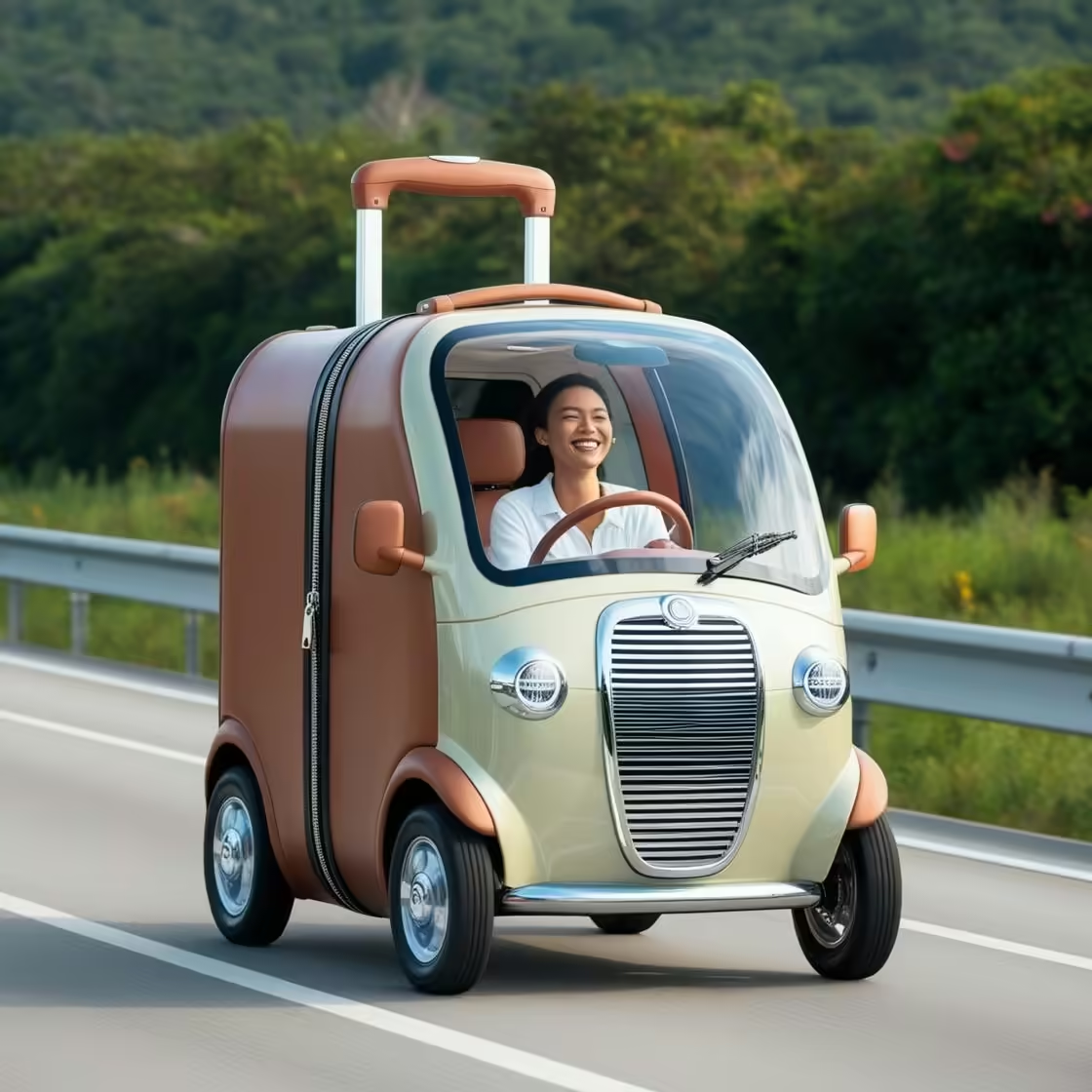Innovation in the automotive industry often comes in surprising forms, but nothing is as unique or captivating as the suitcase-shaped car. A blend of convenience, portability, and quirky aesthetics, this compact vehicle redefines the concept of mobility. From its origins to modern designs, the suitcase car is an extraordinary feat of engineering and imagination.
In this blog post, we will take a deep dive into the world of suitcase-shaped cars, exploring their history, uses, benefits, and what the future holds for this revolutionary type of vehicle.
A Brief History of the Suitcase-Shaped Car
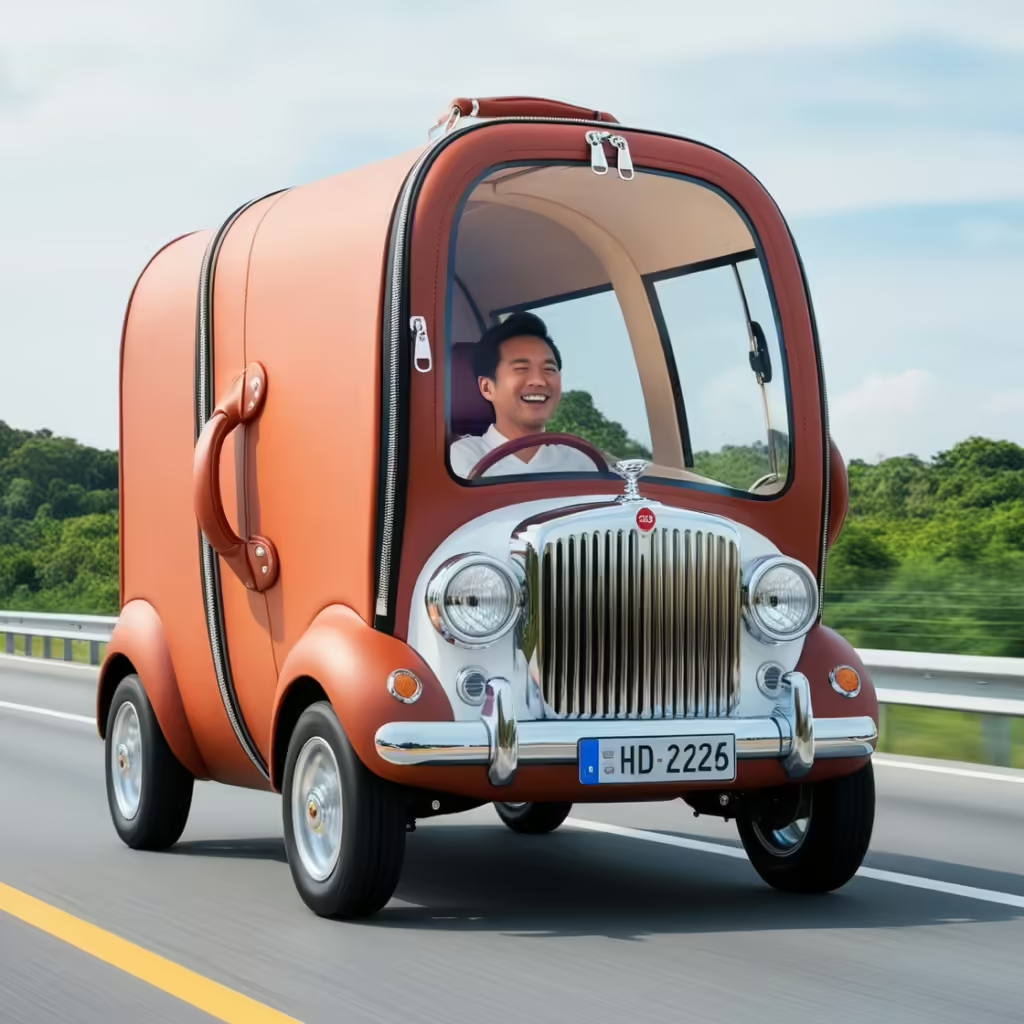
The concept of the suitcase-shaped car dates back several decades. Although not a mainstream vehicle, it has always attracted innovators and enthusiasts looking for creative transportation solutions. The first prototypes emerged during the 1950s and 1960s when engineers explored novel car designs aimed at improving space efficiency. The idea of combining a suitcase and a car seemed outlandish, but it intrigued many due to the potential benefits in portability and urban commuting.
Early Prototypes and Pioneers
One of the earliest known suitcase-shaped cars was created by Chinese inventor He Liangcai, who designed a functional scooter that could fold into a suitcase. This simple yet groundbreaking concept paved the way for more advanced models. While Liangcai’s invention was small and primarily for short commutes, it proved that the idea could be practical.
Over time, additional innovators developed more robust versions, improving safety features, design elements, and the range of travel. Though these cars never became commercially widespread, they did leave a lasting impact on the way we think about urban mobility.
Modern-Day Suitcase-Shaped Cars: Innovation at Its Best
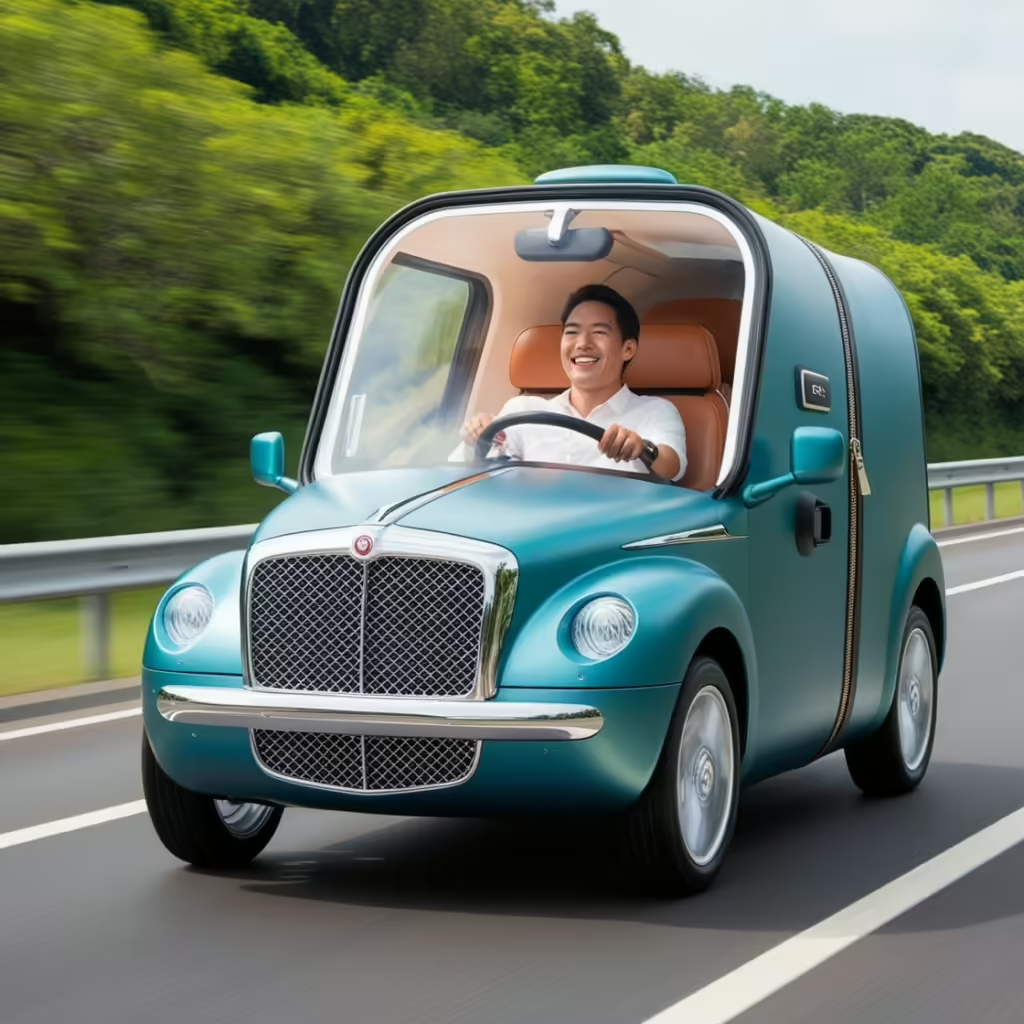
Today’s suitcase-shaped cars have advanced considerably from their early prototypes. With improvements in technology, such as electric batteries, lightweight materials, and smart engineering, modern suitcase cars offer a viable solution for compact, eco-friendly transportation.
Electric Suitcase Cars: Compact and Sustainable
Electric suitcase-shaped cars are the latest innovation in the field. These small vehicles are powered by compact, rechargeable electric batteries, making them eco-friendly and easy to maintain. Given their tiny footprint, suitcase cars are perfect for navigating crowded urban areas or handling short commutes. These vehicles are so small that they can be carried onto public transportation or stored under your desk, just like a piece of luggage.
The Foldable Feature: Convenience Redefined
One of the most appealing aspects of a suitcase-shaped car is its foldable design. Unlike conventional vehicles, suitcase cars can be folded and carried like a standard suitcase. This makes them incredibly practical for people living in urban apartments or those who frequently travel. Their portable nature eliminates the need for parking space, making them perfect for dense cities where space is at a premium.
The Mechanics Behind Suitcase-Shaped Cars
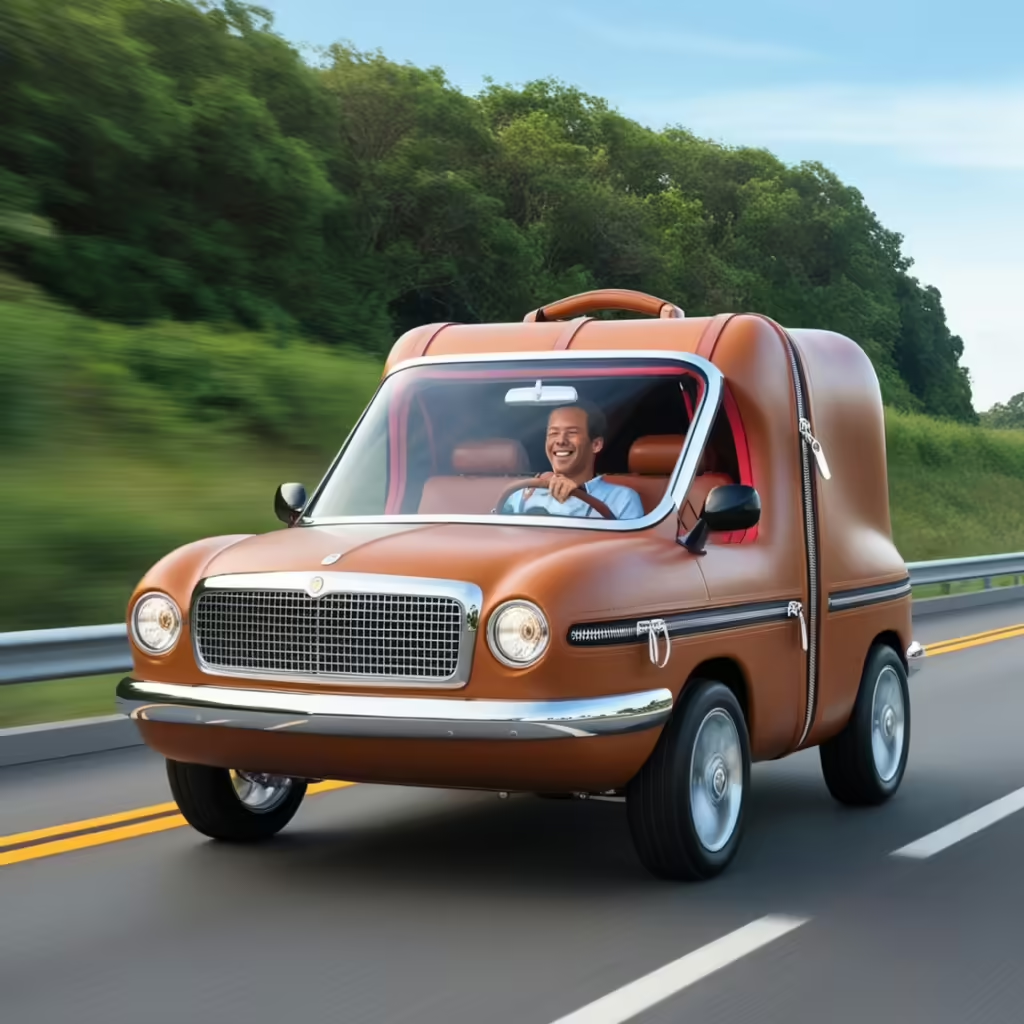
Despite their small size, suitcase-shaped cars come equipped with essential mechanical components to make them road-worthy. While not intended for high-speed highway driving, these vehicles are perfect for navigating local roads and small streets.
Lightweight Materials
To maintain portability, suitcase-shaped cars are built from lightweight materials such as carbon fiber, aluminum, and advanced plastics. These materials ensure the car is durable yet light enough to fold and carry with relative ease.
Compact Power Sources
Most suitcase-shaped cars are powered by small electric motors. These motors are efficient, quiet, and compact, allowing the vehicle to reach speeds suitable for urban commuting. The battery life, depending on the model, typically offers a range of up to 20-30 miles, making it ideal for short-distance travel. Charging is also simple and can be done through standard power outlets.
User-Friendly Features
Despite their minimalistic appearance, suitcase-shaped cars often come with modern conveniences such as GPS navigation, Bluetooth connectivity, and even USB charging ports. Some high-end models also feature fold-out handlebars or joysticks for easy control, ensuring that you don’t sacrifice comfort or usability for the sake of portability.
Advantages of Owning a Suitcase-Shaped Car
Suitcase-shaped cars may not be for everyone, but they offer distinct advantages, especially for city dwellers or those who frequently travel.
Portability and Space-Saving Design
One of the standout features of suitcase-shaped cars is their compactness. When folded, these vehicles take up very little space, making them easy to store in apartments, hotel rooms, or even the trunk of a regular car. If you’re someone who struggles with parking or hates the hassle of searching for a parking spot in busy cities, a suitcase-shaped car eliminates that issue entirely.
Eco-Friendly Transportation
With growing concerns about carbon emissions and environmental impact, suitcase-shaped cars provide a greener alternative. Many of these vehicles run on electric power, contributing to a reduction in pollution and reliance on fossil fuels.
Cost-Effective
Compared to traditional vehicles, suitcase-shaped cars are far more affordable, both in terms of purchase price and ongoing maintenance. Since they are electric, you also save on fuel costs, and their small size means that repair and part replacements are generally cheaper.
Perfect for Urban Living
For individuals living in cities, a suitcase-shaped car is a dream come true. It can easily navigate narrow streets and tight parking spaces, and the ability to fold it up means you can take it virtually anywhere. Whether you’re commuting to work, running errands, or simply enjoying a day in the city, a suitcase-shaped car offers convenience like no other vehicle.
Limitations and Considerations
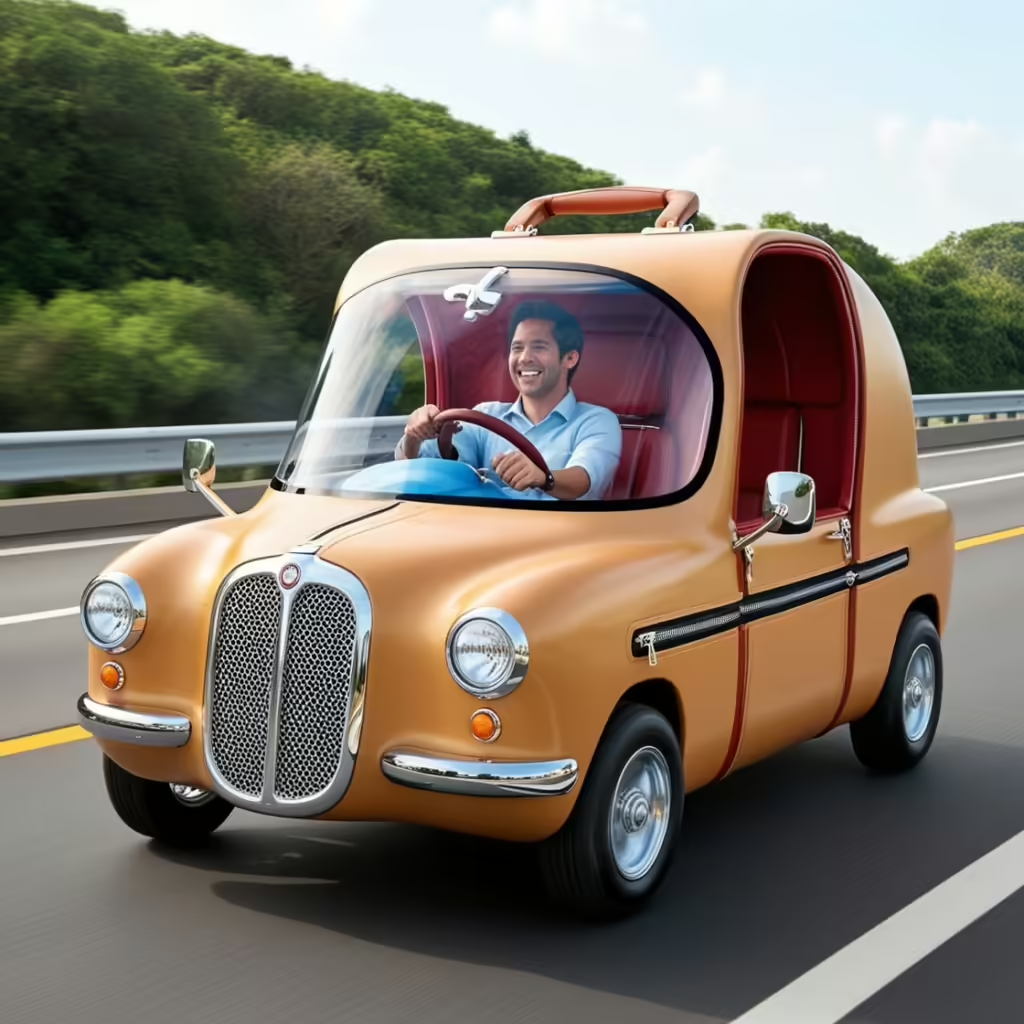
While the suitcase-shaped car offers many advantages, it also comes with a few limitations that potential buyers should be aware of.
Limited Speed and Range
Given their small size and electric power, suitcase-shaped cars aren’t designed for long-distance travel or high-speed driving. Their range is typically limited to around 20-30 miles per charge, making them unsuitable for highway use or long road trips.
Lack of Safety Features
Most suitcase-shaped cars are designed with minimalistic safety features due to their compact nature. While they are adequate for city driving, they may not offer the same level of protection as standard cars, especially in the event of a collision.
Niche Market
Suitcase-shaped cars serve a specific niche of users. If you frequently drive long distances, require a larger vehicle for family or cargo, or prefer traditional vehicle comforts, this car may not meet your needs. It’s best suited for urbanites and minimalists seeking a practical, short-distance commuting solution.
How the Suitcase-Shaped Car is Changing the Future of Transportation
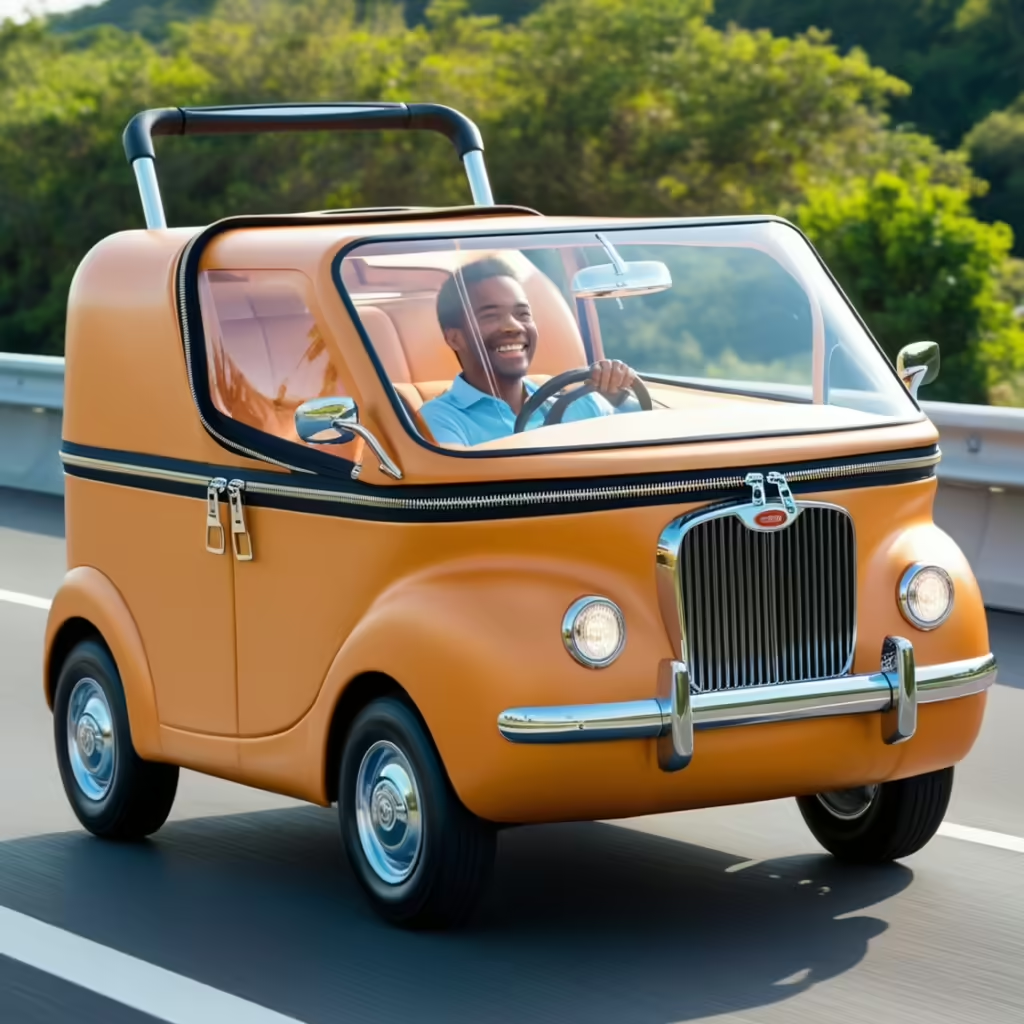
As cities grow more congested and concerns about environmental sustainability continue to rise, suitcase-shaped cars could play an important role in shaping the future of transportation. By offering a compact, eco-friendly alternative to traditional vehicles, these small cars may become increasingly popular among urban dwellers and frequent travelers.
A Solution for Urban Congestion
One of the biggest challenges in cities is traffic congestion, which often leads to wasted time and increased pollution. Suitcase-shaped cars, due to their small size and portability, can help alleviate these issues. Their ability to be folded and carried allows them to bypass many of the traditional constraints that come with larger vehicles.
Encouraging Green Innovation
As automakers strive to create more environmentally friendly vehicles, the development of suitcase-shaped cars represents an exciting avenue for innovation. By continuing to improve the materials, power sources, and usability of these vehicles, the automotive industry is paving the way for greener, more sustainable forms of transportation.
Customization Options for Suitcase-Shaped Cars
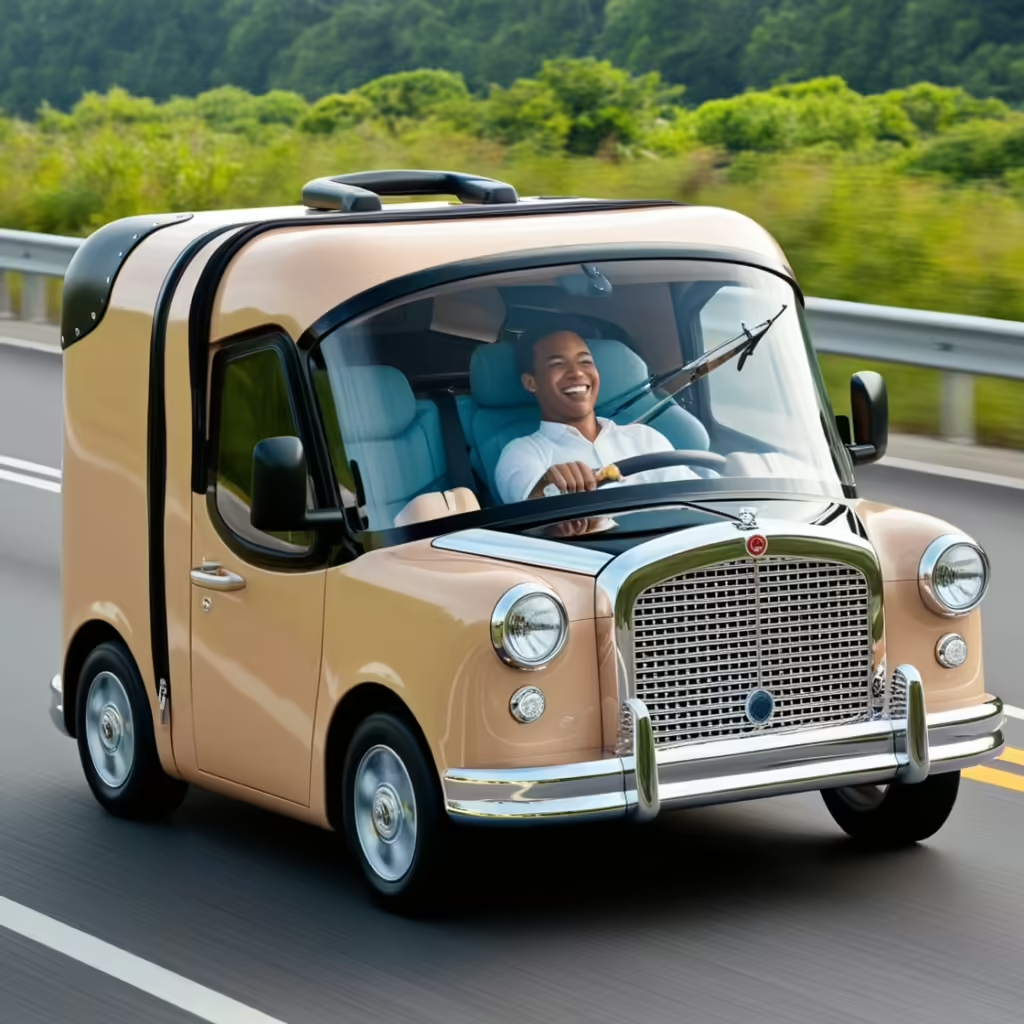
As the demand for suitcase-shaped cars increases, manufacturers are exploring ways to make these vehicles more personalized for individual users. Customization is an essential trend in the automotive industry, and suitcase-shaped cars are no exception.
Aesthetic Customizations
Much like traditional cars, suitcase-shaped vehicles can be personalized in terms of color, material, and finishes. Owners can select from a range of paint options, decals, or even choose custom finishes such as chrome or matte designs. Some manufacturers offer wraps or stickers, allowing users to express their personal style or brand their suitcase car.
Functional Add-Ons
Functionality can also be customized. For example, some suitcase-shaped cars allow for the addition of extra storage compartments or fold-out trays, making the vehicle even more convenient for those who are always on the go. Certain models offer detachable power sources, which means you can swap out batteries or upgrade your car’s power capacity to suit longer journeys.
Tech Enhancements
Another popular customization is upgrading the technology embedded in suitcase-shaped cars. Owners can install enhanced GPS systems, touch screens, and even surround-sound systems, elevating the driving experience while keeping the vehicle compact. Smart features like keyless entry, voice control, and proximity alerts may also be included in premium models.
Who Should Consider Owning a Suitcase-Shaped Car?
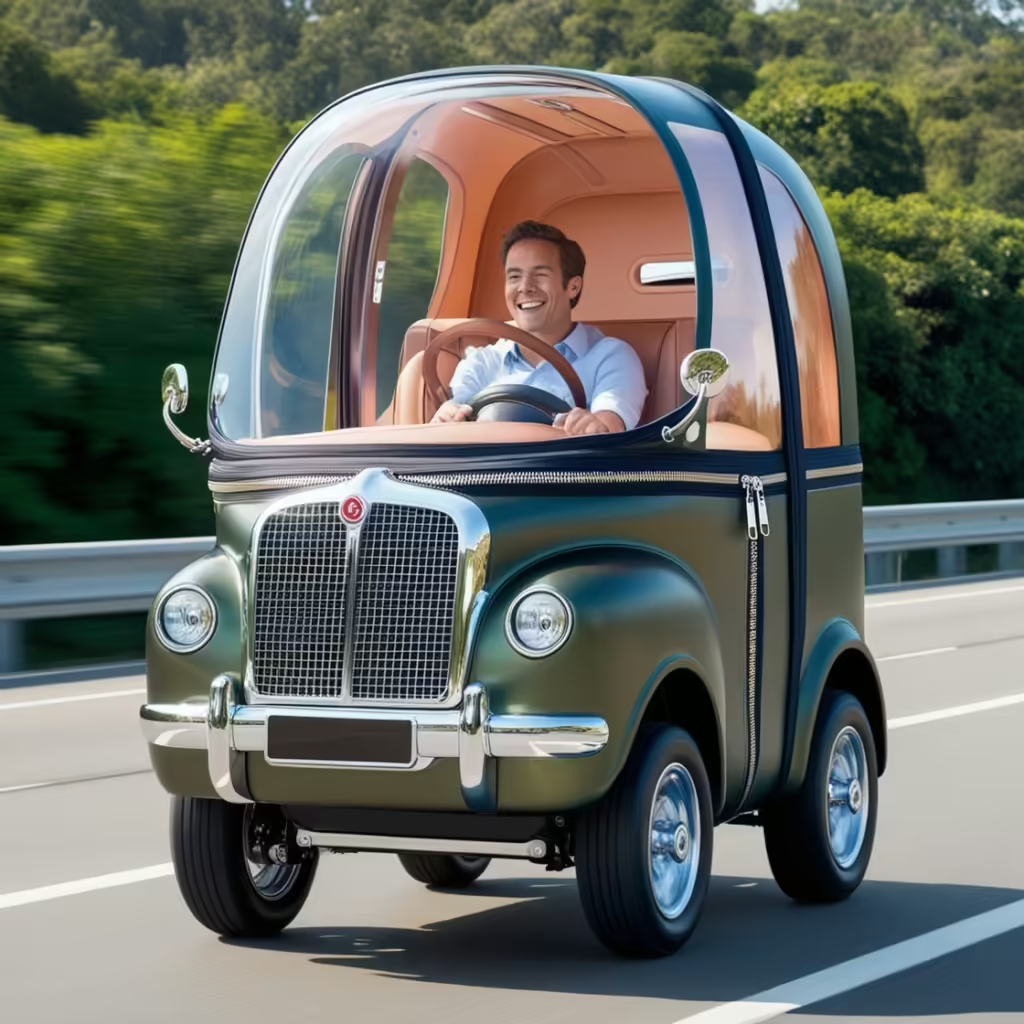
Suitcase-shaped cars aren’t for everyone, but they cater to a specific group of individuals who value portability, convenience, and sustainability. Below are some of the main types of users who may benefit the most from owning one of these unique vehicles.
City Dwellers
For people who live in dense urban areas, owning a large car often presents logistical challenges. Suitcase-shaped cars can be the perfect solution, offering easy maneuverability in tight spaces and eliminating the need for parking. Plus, with many city governments encouraging the use of eco-friendly transportation, a suitcase-shaped car could even qualify for incentives or rebates.
Frequent Travelers
For those who frequently travel, especially for work or leisure within large cities, a suitcase-shaped car offers the ideal blend of portability and utility. You can take it with you on planes, trains, or buses, and have your own mode of transportation ready upon arrival. This eliminates the need for costly rental cars or reliance on taxis and ride-sharing services.
Minimalists and Eco-Conscious Consumers
Minimalism is a growing lifestyle trend, and many people are opting for smaller, more efficient vehicles. The suitcase-shaped car fits perfectly into this lifestyle by reducing the clutter associated with traditional cars. Additionally, since many of these cars are electric, they appeal to consumers who prioritize environmental sustainability and want to reduce their carbon footprint.
Students and Young Professionals
Students and young professionals, especially those living on college campuses or in apartments with limited parking, can benefit from the low cost and practicality of suitcase-shaped cars. They offer a budget-friendly alternative to traditional vehicles while still providing a personal, convenient way to get around.
The Future Market Potential of Suitcase-Shaped Cars
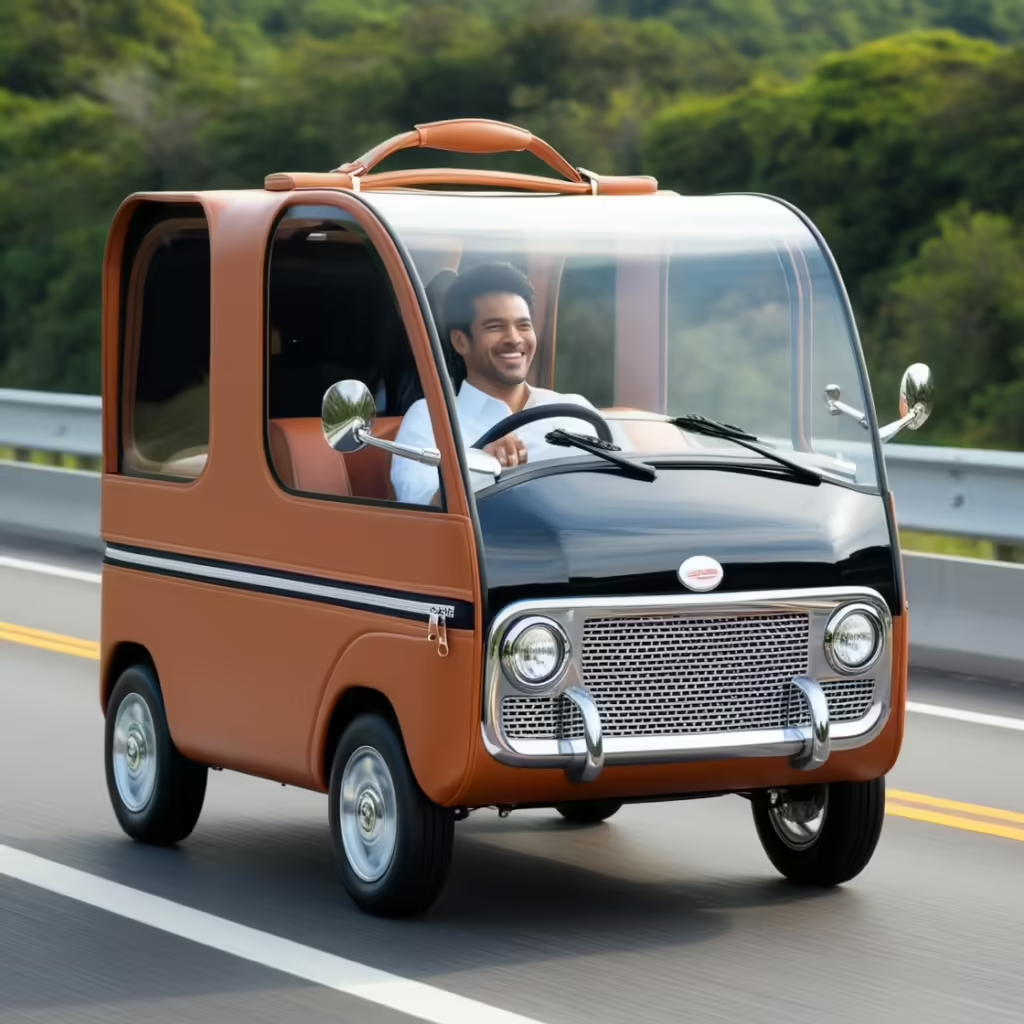
Given the rising interest in compact and sustainable transportation, suitcase-shaped cars have the potential to grow significantly in popularity. As more manufacturers enter the market and technological advancements continue, these vehicles could become a staple in the future of urban commuting.
Potential for Ride-Sharing and Rental Models
As suitcase-shaped cars become more mainstream, there could be opportunities for ride-sharing or rental companies to adopt them as part of their fleets. The portability of these cars would make them ideal for “last mile” transportation solutions, where users could easily pick up and drop off vehicles in high-traffic areas. This could further reduce the need for personal car ownership in cities.
Integration with Smart Cities
With the rise of smart cities—urban areas that use digital technology to improve efficiency and quality of life—suitcase-shaped cars could play a significant role. These cars could integrate with smart infrastructure, including automated parking systems, ride-sharing apps, and city-wide electric charging stations, making them a convenient choice for city residents.
Emerging Technologies and Autonomous Driving
As technology continues to evolve, it’s likely that suitcase-shaped cars could incorporate autonomous driving features. Imagine a car that not only folds into a suitcase but can also drive itself to pick you up or navigate through the city independently. The potential for integrating AI and self-driving technology into these small vehicles could revolutionize the way we think about personal transportation.
How to Choose the Right Suitcase-Shaped Car for You
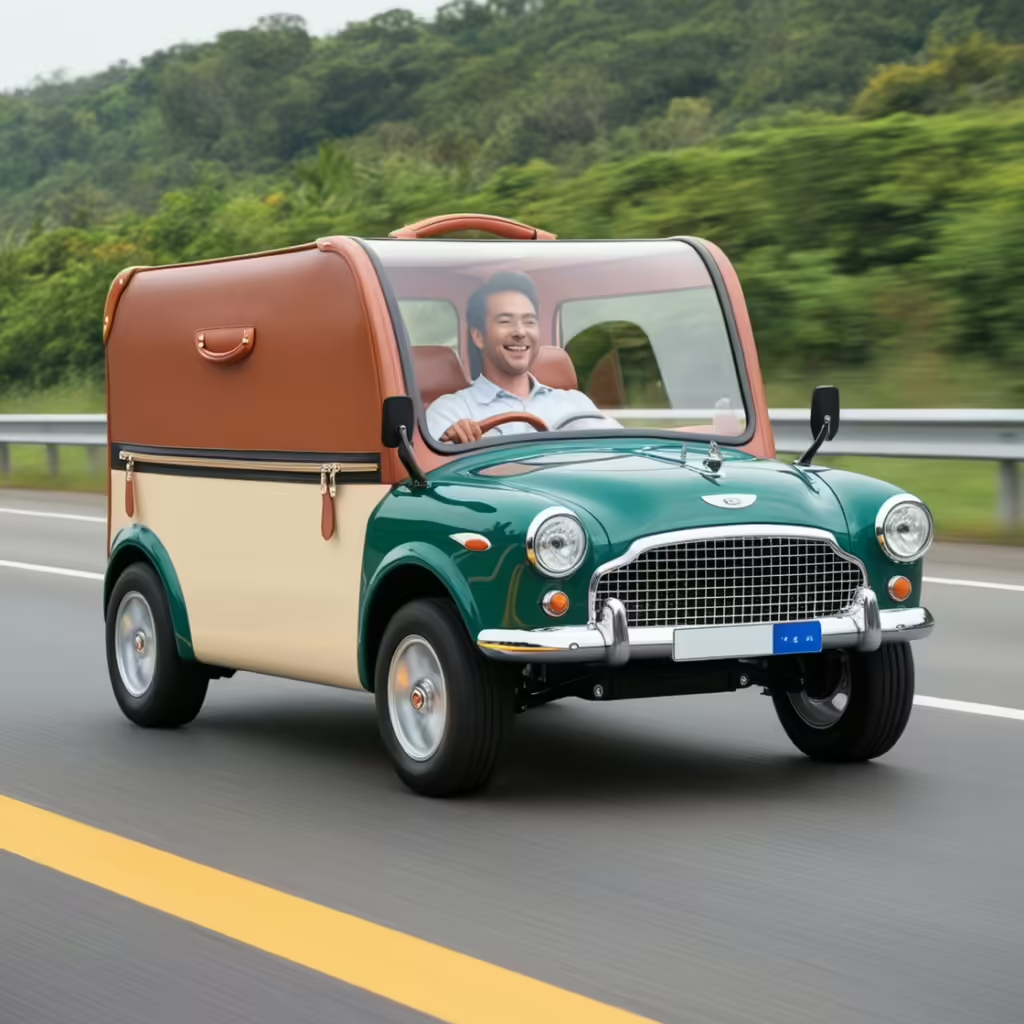
If you’re considering purchasing a suitcase-shaped car, there are several factors to keep in mind to ensure you choose the right model for your needs.
Purpose of Use
First, consider how and where you plan to use your suitcase-shaped car. If you primarily need a vehicle for commuting in a busy city, a basic model with a moderate range may be sufficient. However, if you’re a frequent traveler or require a longer range, investing in a model with extended battery life and additional features would be worthwhile.
Budget
Suitcase-shaped cars come in a range of prices, from affordable entry-level models to premium versions with all the bells and whistles. Determine your budget ahead of time and look for options that provide the best value for your money.
Safety and Features
While suitcase-shaped cars are designed for short-distance travel, it’s important to ensure that the model you choose has adequate safety features. Look for models with strong braking systems, durable materials, and any additional safety options like airbag integration or enhanced lighting.
Battery Life and Charging Time
Since most suitcase-shaped cars are electric, it’s crucial to evaluate the battery life and charging time of different models. Some models may offer quick charging capabilities, while others might take several hours to charge fully. Be sure to choose a model that fits your daily usage needs and charging convenience.
Conclusion: The Suitcase-Shaped Car—A Game-Changer in Urban Mobility
The suitcase-shaped car may seem like a novelty at first glance, but it represents a significant step forward in the future of urban transportation. Its compact size, eco-friendly nature, and sheer convenience make it an ideal solution for those who live in bustling cities or frequently travel. As the world continues to move towards greener and more efficient transportation options, suitcase-shaped cars could become a common sight on city streets worldwide.
While they may not replace traditional vehicles, their unique design and functionality position them as a perfect complement to our existing transportation methods. As technology continues to evolve and more consumers recognize the benefits of these tiny, portable vehicles, the suitcase-shaped car may soon become a mainstream mode of transport.
